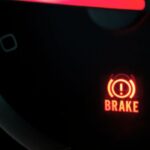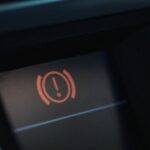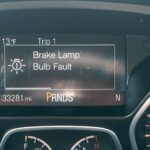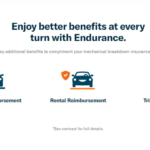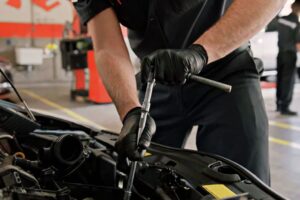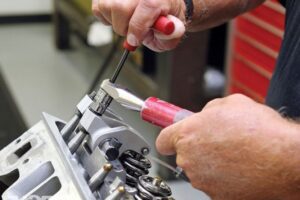If you notice that your brake light warning is on, it is important to take action immediately. The brake light warning is a safety feature that indicates there is an issue with the brake system.
Ignoring this warning could lead to serious consequences, such as brake failure, which could result in an accident.
There are several reasons why the brake light warning could be on. It could be due to a malfunctioning parking brake, low brake fluid levels, or a problem with the hydraulic braking system.
It is important to diagnose the issue as soon as possible to prevent further damage to the brake system. In some cases, the solution may be as simple as releasing the parking brake or adding brake fluid.
However, in other cases, professional repair may be necessary.
Understanding Brake Warning Lights

When driving, it is essential to pay attention to the warning lights on the dashboard. One of the most important warning lights is the brake warning light, which indicates that there is an issue with the braking system.
The brake warning light can appear as an exclamation mark inside a circle, or as the words “BRAKE” or “BRAKE SYSTEM.” It can also be accompanied by other warning lights, such as the ABS warning light or the check engine light.
There are several reasons why the brake warning light may come on. One of the most common reasons is that the brake pads are worn and need to be replaced. Other reasons include low brake fluid levels, a malfunctioning brake system, or a faulty sensor.
It is important to take the brake warning light seriously and address the issue as soon as possible. Driving with a faulty brake system can be dangerous and increase the risk of an accident.
If the brake warning light comes on, the driver should first check the brake fluid level and add more if necessary. If the fluid level is fine, the driver should take the car to a mechanic to have the braking system inspected.
In conclusion, the brake warning light is an important warning light on the dashboard that should not be ignored. It can indicate a serious issue with the braking system that needs to be addressed immediately. By taking prompt action, drivers can ensure their safety and the safety of others on the road.
Common Causes for Brake Light Warning

When the brake light warning comes on, it can be a sign of several issues. Here are some of the most common causes of a brake light warning.
Brake Fluid Issues
One of the most common reasons for a brake light warning is low brake fluid. The brake fluid is responsible for transmitting the force from the brake pedal to the brake pads or shoes. If the brake fluid level is low, it can cause the brake warning light to come on. In some cases, the brake fluid reservoir may have a leak, causing the fluid level to drop.
If the brake fluid level is low, it is important to add brake fluid to the reservoir. The brake fluid used in most vehicles is hydraulic fluid, which is a special type of oil that is designed to withstand high pressure. When adding brake fluid, it is important to use the correct type of fluid for your vehicle.
Brake Pad Wear
Another common reason for a brake light warning is worn brake pads. Most brake pads have a wear indicator that will make a squeaking noise when the pads are getting low. If the brake pads are worn down to the metal, it can cause damage to the brake rotors or drums.
If the brake pads are worn, it is important to replace them with new brake pads. This is a relatively simple process that can be done by a mechanic or a DIYer with some basic tools.
Faulty Wheel Speed Sensor
The wheel speed sensor is responsible for detecting the speed of the wheels and transmitting that information to the ABS system. If the wheel speed sensor is faulty, it can cause the brake light warning to come on. This can be caused by a damaged sensor or a wiring issue.
If the wheel speed sensor is faulty, it will need to be replaced. This is a job that is best left to a mechanic, as it requires specialized tools and knowledge.
Issues with Parking Brake
The parking brake is designed to hold the vehicle in place when parked. If the parking brake is engaged, it can cause the brake light warning to come on. This can be caused by a faulty parking brake switch or a problem with the brake release mechanism.
If the parking brake is engaged, it is important to release it before driving the vehicle. If the parking brake is not engaged and the brake light warning is still on, it is important to have the vehicle inspected by a mechanic to determine the cause of the issue.
In conclusion, the brake light warning can be caused by several issues, including low brake fluid, worn brake pads, a faulty wheel speed sensor, or issues with the parking brake. It is important to have the vehicle inspected by a mechanic to determine the cause of the issue and ensure that the brakes are working properly.
Impact on Brake System

When the brake warning light comes on, it is an indication that there is a problem with the braking system. The braking system is a crucial component of any vehicle, and any issues with it can have serious consequences.
The brake system consists of several parts, including the master cylinder, brake pedal, brake lines, brake hoses, calipers, brake rotors, and proportioning valve. Any of these components can be affected when the brake warning light comes on.
One of the most common issues that can cause the brake warning light to come on is low brake fluid. The brake fluid is responsible for transmitting the hydraulic pressure from the master cylinder to the brake calipers, which in turn apply the brake pads to the brake rotor. If there is not enough brake fluid, the hydraulic pressure will be reduced, and the stopping power of the brakes will be affected.
Another issue that can cause the brake warning light to come on is air in the brake system. Air in the brake system can cause the brake pedal to feel spongy, and it can also reduce the brake pressure, which can affect the stopping power of the brakes.
In some cases, the brake warning light can come on because of a problem with the brake pressure sensor. The brake pressure sensor is responsible for measuring the hydraulic pressure in the brake system, and if it is faulty, it can cause the brake warning light to come on.
If the brake warning light comes on, it is important to have the braking system checked as soon as possible. Continuing to drive with the brake warning light on can be dangerous, as it can lead to reduced stopping power and even locking up of the brakes.
In summary, when the brake warning light comes on, it is an indication that there is a problem with the braking system. The brake system is a crucial component of any vehicle, and any issues with it can have serious consequences.
The most common issues that can cause the brake warning light to come on are low brake fluid, air in the brake system, and a faulty brake pressure sensor. It is important to have the braking system checked as soon as possible to ensure safe driving.
Role of ABS in Brake System
The Anti-lock Braking System (ABS) is an essential safety feature in modern vehicles. It is designed to prevent the wheels of a vehicle from locking up when braking, thereby allowing the driver to maintain control of the vehicle and avoid accidents.
The ABS works by monitoring the speed of each wheel and adjusting the braking force accordingly. If one or more wheels begin to lock up, the ABS will reduce the braking force to that wheel, allowing it to regain traction. This process is repeated many times per second, allowing the vehicle to come to a stop in a controlled manner.
The ABS is particularly useful in slippery or wet conditions, where it can be challenging to maintain traction. In these situations, the ABS can prevent the wheels from locking up, allowing the driver to maintain control of the vehicle and avoid accidents.
When the ABS is activated, the ABS warning light on the dashboard will illuminate. This warning light indicates that there is a problem with the ABS system and that it should be inspected by a qualified mechanic.
It is essential to note that the ABS is not a substitute for safe driving practices. Drivers should always maintain a safe following distance, avoid sudden stops, and drive at a safe speed for the road conditions.
In summary, the ABS is a critical safety feature in modern vehicles that helps prevent accidents by allowing the driver to maintain control of the vehicle during braking. If the ABS warning light comes on, it is essential to have the system inspected by a qualified mechanic to ensure that it is working correctly.
Professional Diagnosis and Repair
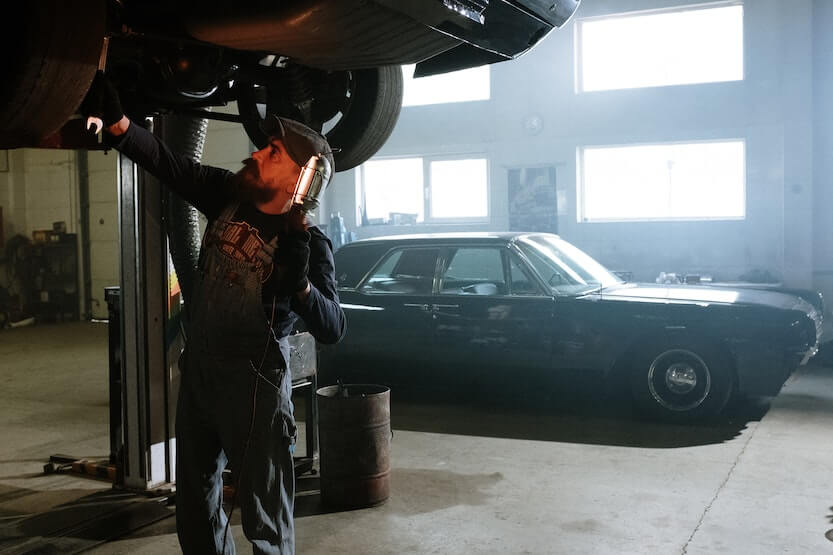
If the brake light warning is on, it is recommended to take the vehicle to a professional mechanic or technician for a proper diagnosis and repair. A mechanic or technician has the necessary knowledge, skills, and tools to accurately diagnose the issue and provide the appropriate repair.
A repair shop or service center is also a good option for those who do not have a personal mechanic or technician. These establishments have a team of professionals who can diagnose and repair the issue quickly and efficiently.
When diagnosing the issue, a professional may use diagnostic trouble codes (DTCs) to identify the problem. DTCs are codes that are stored in the vehicle’s computer when a problem is detected. These codes can be read by a diagnostic tool, which will provide information about the issue.
Once the issue has been diagnosed, the professional will provide a repair plan and an estimate of the cost. It is important to ask questions and understand the repair plan and cost before proceeding with the repair.
Some common issues that may cause the brake light warning to turn on include low brake fluid levels, worn brake pads or shoes, damaged brake lines, and malfunctioning sensors. A professional can accurately diagnose the issue and provide the appropriate repair.
Overall, it is important to trust the professionals when it comes to diagnosing and repairing brake issues. They have the necessary expertise and tools to ensure that the issue is properly diagnosed and repaired, ensuring the safety of the vehicle and its occupants.
DIY Solutions and Precautions
When the brake light comes on, there are some DIY solutions that can be done to avoid costly repairs. Here are some of the things that can be done:
- Check the Brake Light Bulbs: The first thing to do is to check the brake light bulbs. If the brake light bulbs are burned out, they need to be replaced. It is an easy DIY solution that can be done in a few minutes. However, if the bulbs are not the issue, then the problem might be more serious.
- Check the Brake Fluid Level: The brake fluid level is important for controlling the brakes. The driver should check the brake fluid reservoir to determine if they will need to add or flush the brake fluid.
- The brake fluid reservoir is located close to the firewall on the driver’s side of the car. If the brake fluid level is low, the driver can add more brake fluid to the reservoir. However, if the brake fluid level is normal, then the problem might be more serious.
- Check the Parking Brake: The driver should check the parking brake to ensure that it is completely off. If the parking brake is on, it can cause the brake light to come on. The driver should release the parking brake and check if the brake light goes off.
It is important to note that if none of these DIY solutions work, the driver should take the car to a mechanic for a proper diagnosis.
When attempting to fix the brake light, there are some precautions that should be taken:
- Safety First: The driver should always ensure that the car is on a level surface and the emergency brake is engaged before attempting to fix the brake light.
- Wear Gloves: The driver should wear gloves to avoid getting oil or brake fluid on their hands. This will also prevent any accidental cuts or injuries.
- Use the Right Tools: The driver should use the right tools when fixing the brake light. This will ensure that the job is done correctly and efficiently.
By following these DIY solutions and precautions, the driver can save money on costly repairs and ensure that their car is safe to drive.
To Summarize
When the brake warning light comes on, it can be a cause for concern. The light can indicate several problems with the braking system, including issues with the parking brake, low brake fluid levels, or brake pad wear. It is important to address the issue as soon as possible to avoid further damage to the vehicle and ensure the safety of the driver and passengers.
To diagnose the issue, the driver should first check the parking brake to ensure it is fully disengaged. If the parking brake is not the problem, the driver should check the brake fluid level. Low brake fluid levels can cause the brake warning light to come on and indicate a leak in the system. In this case, the driver should have the brake system inspected by a professional mechanic.
Another possible cause of the brake warning light is worn brake pads. As the brake pads wear down, the brake fluid level in the system drops, causing the light to come on. In this case, the driver should have the brake pads replaced as soon as possible to avoid further damage to the braking system.
In summary, when the brake warning light comes on, it is important to address the issue as soon as possible to ensure the safety of the driver and passengers. The driver should first check the parking brake and brake fluid level, and if necessary, have the brake system inspected by a professional mechanic.

![Honda Brake Fluid [What You Need to Know] Honda Brake Fluid](https://roadsumo.com/wp-content/uploads/2022/02/Honda-brake-fluid-150x150.jpg)

